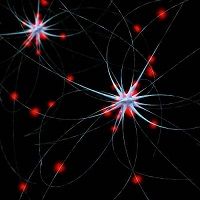Article
Identifying the Source of Neuropathic Pain
Author(s):
The source of neuropathic pain is a biological process called endoplasmic reticulum (ER) stress, according to findings published in the journal Proceedings of the National Academy of Sciences (PNAS).

The source of neuropathic pain is a biological process called endoplasmic reticulum (ER) stress, according to findings published in the journal Proceedings of the National Academy of Sciences (PNAS).
Researchers from the University of California, Davis aimed to discover more therapeutic targets for neuropathic pain. It is estimated that about 70 percent of type 1 and type 2 diabetes patients are affected by neuropathic pain.
“This is a fundamental discovery that opens new ways to control chronic pain,” explained study co author Bruce Hammock, distinguished professor at the UC Davis Department of Entomology and Nematology and the UC Davis Comprehensive Cancer Center, in a press release. “We can now specifically search for agents to control ER stress and its downstream pathways. This search is already underway in a number of laboratories working on cancer and other diseases.”
The researchers found molecular structures typically linked to diabetes and diabetic pain were associated with ER stress. The researchers manipulated the ER stress compounds and determined neuropathic pain could be initiated and reversed using agents that block the compounds.
Prior research demonstrated that a class of natural bioactive lipids has significant analgesic effects on the body. The lipids are broken down in the body by an enzyme known as soluble epoxide hydrolase. Using epoxide hydrolase, the researchers also found that they should be able to test ER stress blocking drugs in their clinic. These findings will lead to further studies, they believe, to understand how different types of pain grouped under the neuropathic umbrella are similar, different, and how they respond to new drugs.
The University of California, Davis statement added that the discovery should eventually benefit millions of patients who suffer from chronic pain from trauma, diabetes, shingles, multiple sclerosis, or other conditions that cause nerve damage. Additionally, it is expected to add to the body of work surrounding the hunt for therapeutic combinations which treat pain.





